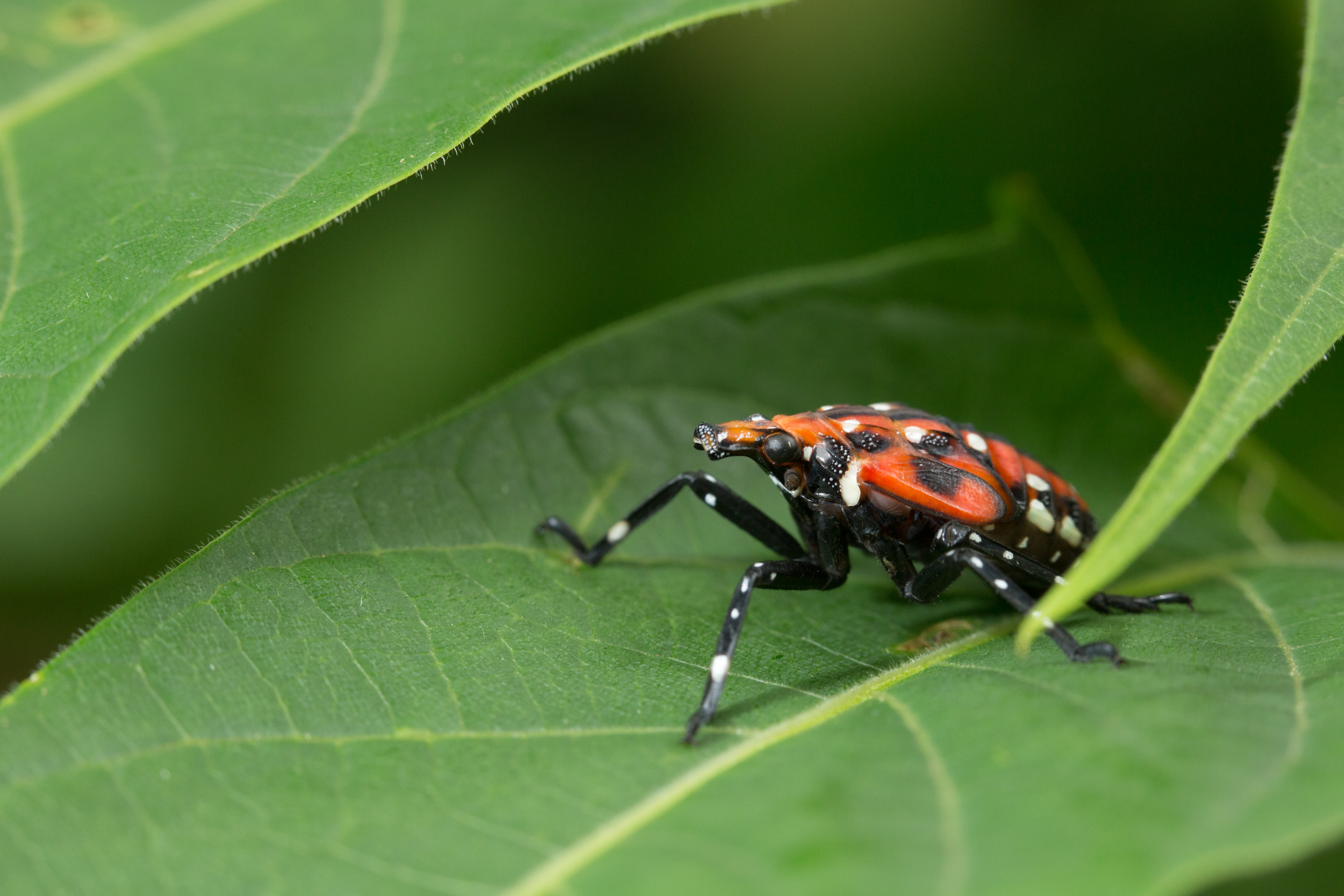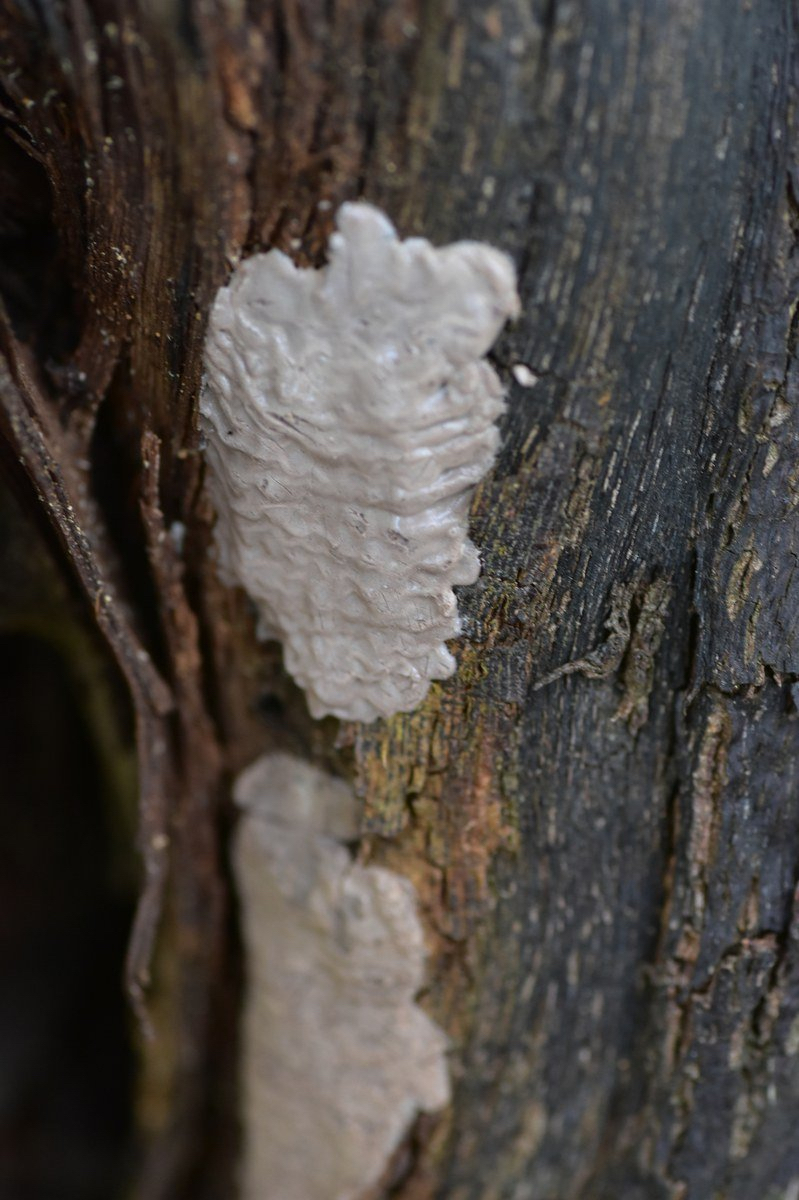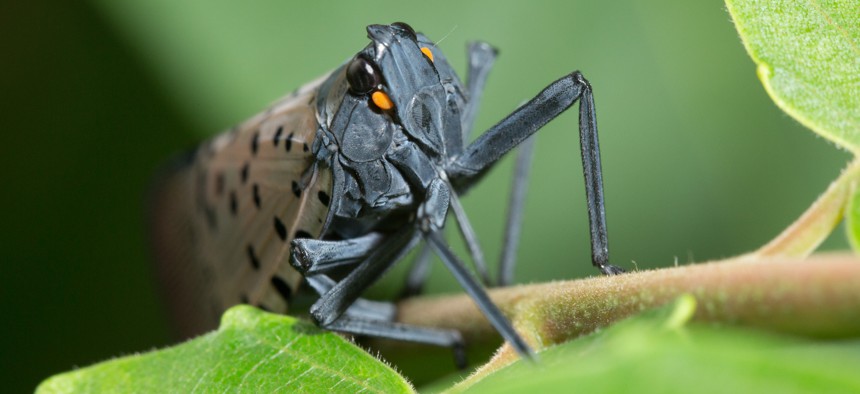Connecting state and local government leaders
The spotted lanternfly is damaging Pennsylvania vineyards and threatening other farm goods and trees. Researchers are looking at a fungus and tiny wasps as options to kill it.
It seemed that Clover Hill Vineyards and Winery might finally get a reprieve from its multi-year battle with the spotted lanternfly. Until about three weeks ago.
The invasive pest emerged in Pennsylvania back around 2014 after apparently slipping into the country with imported cargo. As the lanternfly's numbers ballooned, it became clear that the insect likes to feed on the sap of grape plants, potentially harming both the vines and the fruit.
Clover Hill has about 70 acres of grapes in production at six sites in a region west of Allentown.
It’s been fighting the spotted lanternfly at two of the vineyards since 2015 and at the other four since 2016. This spring, there were fewer signs than in past years at the vineyards of juvenile, or “nymph,” lanternflies, said Kari Skrip, who runs the business with her parents and brother.
But in early September the bugs returned in force. “I don't know where they came from, but they came out in pretty big quantities,” Skrip said. “They just started swarming everywhere.”
A swath of southeast Pennsylvania that covers 14 counties and roughly 3,000 square miles is the epicenter of the nation’s spotted lanternfly invasion. Reports of the insect in and around Philadelphia skyrocketed this year, with city police last month humorously pleading with people on Twitter to not call 911 about sightings.
Residents are embracing a call to action to kill the insect. There’s even an app—called Squishr—where people can record how many lanternflies they’ve squashed.
The bug has been detected in other states around Pennsylvania as well, including Delaware, Maryland, a county in northern Virginia, and New Jersey, where the total number of counties in which the insect has been found had grown to eight as of mid-September.
While spotted lanternflies can be a nuisance for people going about their day-to-day business, they do not bite or sting and are not known to carry human diseases. For farmers, though, the bugs pose a more serious dilemma because of the damage they can cause to crops.
With this in mind, state and federal agencies have been waging a pricey war against the insect, with the U.S. Department of Agriculture allotting about $50 million—roughly $30 million of it in the past fiscal year—and Pennsylvania budgeting $3 million annually during the past two years for anti-lanternfly efforts.
California’s agriculture department is also funding lanternfly research, including a project exploring the possibility of deploying small wasps as potential combatants. The spotted lanternfly has yet to establish a population in the major agricultural—and wine producing—state, but has turned up ominously on airplanes landing there.
“This is a big problem and it needs a big response,” said Kevin Shea, administrator of USDA’s Animal and Plant Health Inspection Service, which is spearheading the federal effort. “We really geared up last year, got a lot of work done getting people hired, getting locations set up.”
“This year we're all out,” he added.
A native of China and other Asian countries, the lanternfly lacks natural predators here in the U.S. The insect’s survival and its gradual spread over the past couple years, despite efforts to stop it, demonstrates the difficulties in snuffing out invasive pests.
“It is not if, but when, it’s spreading to other areas,” said Heather Leach, a spotted lanternfly expert at Penn State Extension.
She said predictive models showing the most likely future distribution of the insect throughout the U.S. indicate that it could easily spread in the mid-Atlantic and Northeast regions, and that the Midwest and west coast are areas that could provide very suitable habitat for the bug.
Shannon Powers, a spokesperson for Pennsylvania’s agriculture department said whether the lanternfly situation has been getting better or worse in the state can be a matter of perspective.
“For those winery owners who have just had devastating losses, things are getting worse,” she acknowledged, adding that the same may be true for homeowners getting pelted by the insects on their patios, or people with outdoor businesses.
In Philadelphia, for example, the agency last year received 15 reports of the bug, but has received 7,700 so far this year. But other areas that were densely infested last year weren't this year, Powers said.
Researchers trying to develop safe ways to kill the bug using “biological control” methods, like fungi and wasps, have some encouraging leads, but suggest that it’s unlikely there will be a solution anytime soon to wipe out the spotted lanternfly entirely.
“Often times an invasive species comes in and people want a silver bullet,” Leach said. “I don't see that with spotted lanternfly. This is kind of a tricky bug. It feeds on so many different things.”
With the size of the population, the somewhat large area it’s now living in, and the tools available for fighting it, Leach said it’s unlikely eradicating the lanternfly is currently in the cards.
Lanternfly control programs now underway are proving to be effective at suppressing and containing the bugs, she said. “But really I think a lot of that is to buy us time,” Leach added. “So that by the time it gets to, say, New York we have better options available to manage it."
The lanternfly is seen as a threat to not only wine grapes but other agricultural goods, such as hops and nuts, as well as certain trees logged for hardwood lumber, like walnut—this is a special concern in Pennsylvania, one of the nation’s leading hardwood producers.
Trees along city streets can also serve as a meal for the bugs. All told, the insect feeds on about 70 different plant species, damaging some more than others.
Adult spotted lanternflies are about one inch long and a half-inch wide. The insects look different as they age. Young ones are mostly black or red with white spots. Older ones have a light brownish hue, with black spots, and red that is exposed on their wings when they fly.

The bugs are adept at hitchhiking. They can latch onto trucks or trains and can lay their “egg masses,” which resemble a smudge of mud, in hidden places.

APHIS’s Shea said he doubted that a list made five or six years ago of the top 20 pests to be concerned about in the U.S. would have even included the spotted lanternfly. And he said that information about the bug was limited when it first surfaced as a problem.
"We didn’t have a whole lot of understanding of its biology, its life cycle, what pesticides work on it, which biological controls might work on it,” he added. Shea noted that his agency and others have been building up their knowledge in these areas during the past couple of years.
Leach said that one of the challenges in assessing the damage spotted lanternflies cause is that they feed on sap, rather than chewing through leaves. So, for instance, a tree might start to look weak or wilted, but the lanternflies full toll on it might not be clear for a year or two.
When she spoke to Route Fifty by phone last week, Leach was in the field east of Allentown, working to collect around 2,000 spotted lanternflies that could be caged with grape vines for experiments to determine what level of feeding by the insect destroys the vines.
The idea is that this information could one day help farmers better manage the insect. “We’re getting crazy amounts of damage on vineyards,” Leach said. “Vines are pretty hard to kill and we have growers losing a lot of money because of this pest.”
Fungal pathogens that attack the spotted lanternfly are showing promise as biological controls. Leach said that it might eventually be possible to spray a fungus on infested areas from aircraft. “That could be used in combination with other tools,” Leach said. “We're cautiously optimistic.”
“The nice thing here is that it doesn’t pose a risk to humans,” she added.
Researchers are also looking at tiny parasitic wasps that prey on spotted lanternflies.
In April, the California Department of Food and Agriculture announced a grant of about $540,000 for a three-year research project that is focused on a roughly 3 millimeter, stingless wasp, that is native to China and destroys spotted lanternfly eggs.
Mark Hoddle heads a biological control research lab at the University of California Riverside and is one of the lead investigators on the state-backed project.
“Often what we do when we deal with an invasive species problem is that we’re extremely reactive,” he said. “We sit around and wait until the insect arrives, establishes, spreads, causes problems and then we initiate control programs.”
The aim with the California project is to be proactive, Hoddle said, so that the state is better positioned to respond if and when the lanternfly arrives and threatens farms and vineyards.
A key step in the research is determining whether the wasp could cause unwanted ecological problems, like harming native lanternflies, which are not well understood.
Hoddle and his colleagues recently spent time in Arizona’s Chiricahua mountains gathering native lanternflies and are now running tests to see what kind of threat the wasps pose to them. Researchers in the eastern U.S. are working in tandem, carrying out similar projects.
Testing biological control agents and establishing that they are safe is not an especially fast process. Hoddle said based on his experience it normally takes about three to five years to complete the work that is required to release them.
In the meantime, a cornerstone of the spotted lanternfly control effort is cutting down a tree known as “tree-of-heaven,” or Ailanthus altissima. It, too, is an invasive species in the U.S., one that native bugs and animals tend to not depend on. But the lanternfly has a strong taste for it.
In addition to clearing the trees, Pennsylvania’s agriculture department and USDA are leaving some of them behind, laced with insecticide that kills lanternflies when they come to feed.
Shea, with USDA, said this strategy has been working. “We’re optimistic that we can stop large, widespread natural spread,” he said. But he added that the lanternfly’s ability to move around on vehicles and freight is a difficult problem to solve.
After several years of dealing with the pest, Pennsylvania does not have estimates of the total crop damage the lanternfly has caused.
Powers said the state agriculture department does have reports that at least one winery in Berks County that the bug attacked lost 90% of its crop and that the vines that survived into this year failed to bear any fruit. There was also a pinot noir crop in the county that was a total loss last season, she said. And since 2016, a chardonnay vineyard there lost 45% of its vines.
“It has been very devastating in particular to the wine grape, and the grape industry in that region,” Powers said of the Berks County area.
Skrip said grape yields at Clover Hill’s vineyards, located in Berks County and neighboring Lehigh County, are down to about one-sixth of what they normally are. But it’s unclear, she said, how much of that is due to the lanternfly and how much wet weather is to blame.
“I'm sure the lanternfly is not helping,” she said.
Skrip noted that the company has held off planting upwards of 15 acres of grapevines due to concerns about the insect. “We don't want to invest in the time and the energy and the money, to put in 15 acres of vineyards,” she said, “just to see them gnawed apart by a lanternfly.”
Bill Lucia is a Senior Reporter for Route Fifty and is based in Olympia, Washington.

NEXT STORY: Over Two Million Pounds of Recyclables Were Sent to a City’s Landfills




